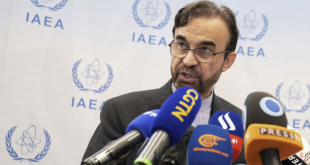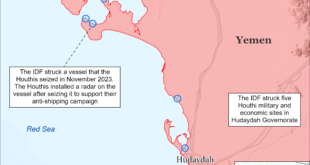 TEHRAN (FNA)- A delegation of six presidents of American universities will visit Iran later this month with the goal of encouraging academic exchange, particularly in the sciences, between Iran and the US.
TEHRAN (FNA)- A delegation of six presidents of American universities will visit Iran later this month with the goal of encouraging academic exchange, particularly in the sciences, between Iran and the US.
The delegation, organized by the Association of American Universities, plans to meet with university faculty and students in Tehran to discuss topics of common interest to the two countries.
The six institutions that comprise the delegation are the University of California at Davis, the University of Florida, the University of Maryland at College Park and Carnegie Mellon, Cornell and Rice universities.
In a press release announcing the visit, AAU President Robert Berdahl said the trip is “in response to an invitation by the president of Sharif University of Technology in Tehran, which will hold the visit.”
The trip will complement similar efforts by the National Academy of Sciences and the National Academy of Engineering, representatives of which last visited the country in October of 2007.
According to Barry Toiv, vice president of public affairs for the AAU, the American universities selected to participate in this month’s exchange have made academic exchanges with Iranian colleges through the National Academies in the past.
“Scientists have visited Iran or Iranian scientists have visited their campuses,” Toiv said. “In 2004, Larry N. Vanderhoef, president of University of California at Davis, led a delegation to Iran, where he met with the president of Sharif University of Technology.”
Toiv added that, while in Iran, the delegation hopes to foster “academic exchange by meeting with the president and the faculty and holding an open forum with students.”
In the past, scholarly exchange between the two countries has been difficult. Politics have frequently impeded travel between the two countries.
“Prior to the Iranian revolution in 1979, a very high percentage of the faculty at Iranian universities was educated in the United States; since that time, and especially since 9/11, that number has declined dramatically,” Berdahl said in the AAU press release.
“We believe it is important to maintain and renew academic ties between our two countries as a means of laying the groundwork for greater understanding and rebuilding what was once a very healthy collaboration in science and higher education.
Additionally, Erica Ehrenberg, executive director of the American Institute for Iranian Studies, said, “In the last few years, it has been very difficult to obtain visas both ways.”
She cited that a Persian language workshop her organization sponsors had to be moved to Tajikistan in 2005 because of trouble obtaining visas to Iran.
In reference to the political implications of such a visit, Toiv said, “This is an academic trip, an academic visit. I think that (the AAU) believe(s) that this kind of exchange is important ultimately to improve relations and encourage science and academic pursuits.”
Visiting Lecturer in Persian Iraj Anvar came from Iran to study in the US just before the 1979 revolution. He and his family had planned to return after two years but haven’t been back since. Anvar said that before the revolution travel between the two countries was “perfectly easy.”
“In those days, there were direct flights,” he said.
“Iranians had a lot of respect all over the world,” Anvar added. “When I traveled to London in 1977, they did not require visa. Next to America, we were the country with a lot of money and a lot of respect.”
 Eurasia Press & News
Eurasia Press & News


